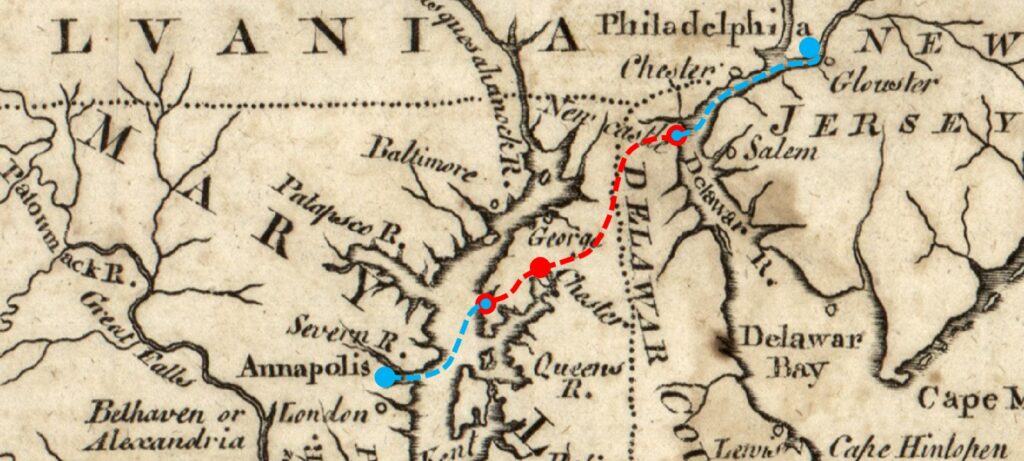/
We often take our modern transportation technology and infrastructure for granted. Our nationwide network of highways, bridges, and tunnels makes it easy to drive a gas-powered, electric, or hybrid car from one city to another at a rate of speed that would shock our ancestors. For example, provided there isn’t a major delay due to an accident, road work, or heavy traffic, we can get from Annapolis to Philadelphia in about two hours, whether we choose to start off on the Chesapeake Bay Bridge and take 301 across the Eastern Shore and Delaware, or drive an alternate route through the Baltimore Harbor Tunnel and up I-95.

Two hundred fifty years ago, completing the trip between Annapolis and Philadelphia took several days, so any innovation that eased some of the inconvenience and discomfort of planning and accomplishing the journey was welcomed by stressed and weary travelers. An advertisement in the May 14, 1772 Maryland Gazette described just such an improvement.

John Bolton, Joseph Tatlow, and James Hodges announced a coordinated schedule that allowed travelers to count on making timely transportation connections along the Eastern Shore route between Annapolis and Philadelphia. Bolton’s “Stage-waggon” drove a weekly circuit between Rock Hall, Maryland and New Castle, Delaware, with stops at Chestertown heading in either direction. Tatlow’s “compleat Stage-boat” carried “Passengers and Goods” between New Castle and Philadelphia. Hodges provided accommodations at Rock Hall and sailed a “compleat Boat” across the Chesapeake Bay to and from Annapolis.

According to the published schedule, a traveler could board Hodges’s boat in Annapolis at 6:00 on a Saturday morning, sail to Rock Hall, and catch a ride from there to Chestertown on Bolton’s wagon. Bolton set out from Chestertown each Monday and arrived in New Castle about noon on Tuesday. At New Castle, “Gentlemen and Ladies” could embark for Philadelphia on Tatlow’s boat, which had “excellent Accommodations for Passengers” and would be “kept neat and clean.” The ad doesn’t specify when the boat would arrive in Philadelphia, but I’m guessing it would have been at some point on Wednesday or Thursday depending on the river current and wind conditions.

Travelers heading in the opposite direction could board Tatlow’s boat in the “City of Brotherly Love” on Sunday and arrive in colonial Delaware’s capital on Monday. Bolton’s wagon would pick them up in New Castle on Tuesday and get everyone to Chestertown on Thursday and Rock Hall on Friday. Hodges’s boat would take the “Passengers, &c.” safely across the bay to Annapolis by Friday evening.
Getting between Naptown and Philly in less than a week “with far less Trouble and Expence than the usual Way” may not sound very impressive to us, but for colonial road trippers, John Bolton, Joseph Tatlow, and James Hodges had put together a winning travel combination.
You can read the May 14, 1772 issue of the Maryland Gazette beginning here: https://msa.maryland.gov/megafile/msa/speccol/sc4800/sc4872/001282/html/m1282-0108.html
To view the full 1767 map of Virginia and Maryland, see: https://www.loc.gov/item/2013587749/
For more about the 1797 watercolor of New Castle’s waterfront, including a link to a scrollable image of the full painting, visit: http://www.nc-chap.org/chap/leblanc.php
Glenn E. Campbell
HA Senior Historian
